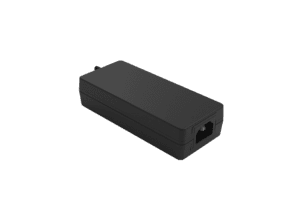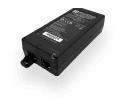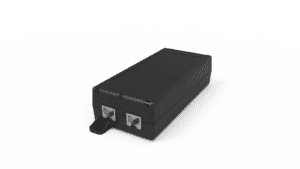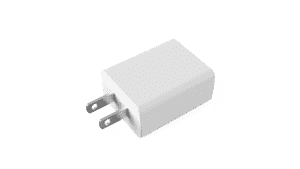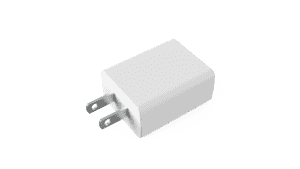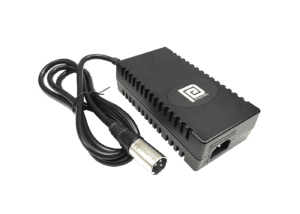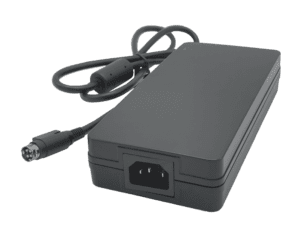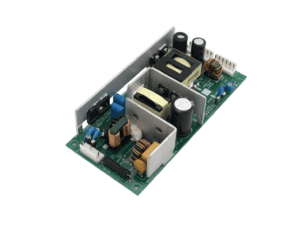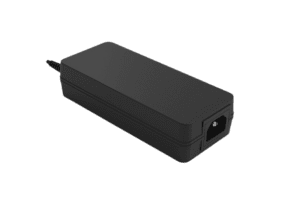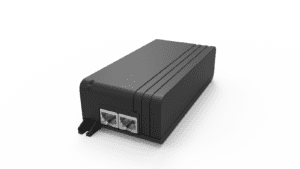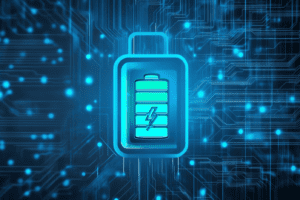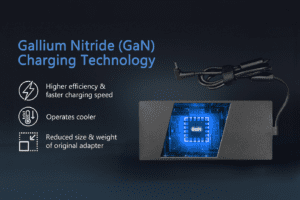BLOG
Adapter vs Charger: What’s the Difference?
Table of contents
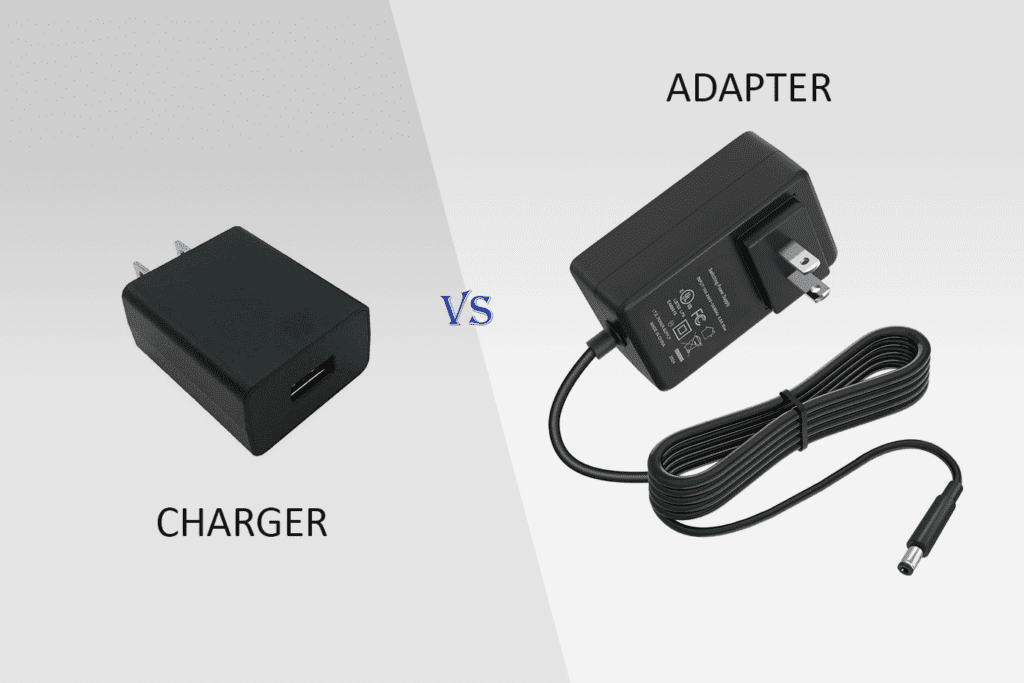
The “adapter vs charger” question is one that often goes unasked, and many people mistakenly assume that these two devices are one and the same. However, there are significant differences between the two, each serving a unique purpose in powering and charging electronic devices. Let’s delve into these differences and understand the roles each plays in modern technology.
Power Adapters
What is an Adapter?
A power adapter (sometimes referred to as a ‘Power Adapter’), is a power supply that converts AC (Alternating Current) from the wall to DC (Direct Current) at a lower voltage that’s safe for electronic devices. Typically, power adapters are for devices that don’t require a battery, like PC monitors or routers for example, however, many modern battery-operated devices like laptops, tablets, and smartphones utilize power adapters all the time.
This is where a lot of people get confused and exclaim “Well, then there’s no difference between an adapter vs charger, because an adapter can keep a device operating while charging the battery at the same time.”. This statement is still technically incorrect:
Laptops, tablets, and smartphones have built-in internal battery charger circuits that are responsible for managing the battery charging process when connected to a power adapter. When the device is plugged in, the power adapter delivers electricity to keep the device running while simultaneously feeding power to the battery charger circuit which serves as the intermediary between the power adapter and the battery, regulating the charging process to ensure the battery is charged safely and efficiently.
The power adapter allows the user to use the portable device while it’s charging and seamlessly transition to battery operation when portability is needed.
Key Features of Internal Battery Charging Circuitry
- Safety: Internal battery charging allows for tighter control of charging parameters such as overcharge protection and temperature regulation to prevent overheating and to extend the battery’s lifespan.
- Efficiency and Smart Charging: Advanced charging circuitry is designed to optimize the charging process, ensuring the battery charges efficiently while maintaining its capacity and health over time. It monitors the battery’s status, adjusts the power flow to maintain optimal conditions, and automatically stops once the battery is fully charged.
- Compatibility Issues: Internal battery chargers are tailored to the specific device, ensuring proper voltage and current delivery to match the battery’s requirements.
- Portability: Integrated into the device, internal battery chargers allow users to switch seamlessly between plugged-in and portable use without needing separate charging equipment.
Adapter Usage Applications & Power Output
Minimum Adapter Output: 5 watts
Usage: Smartphones, Bluetooth Headphones & Earphones, Wearable Devices (e-Watches, health monitoring devices).
Moderate Adapter Output: 30W
Usage: Tablets, e-Readers, Small Laptops, Routers.
High Adapter Output: 100W
Usage: Larger Laptops, Gaming Consoles.
Maximum Adapter Output: Up to 240W
Usage: High-Performance Gaming Laptops, Workstation Computers, Monitors, High-End Appliances.
Power Chargers
What is a Charger?
A ‘Charger’ (or ‘Battery Charger’) is a power supply used to replenish the energy in rechargeable batteries by converting AC power from the wall to DC at the appropriate voltage and current levels needed to charge the battery efficiently and safely.
As we mentioned, in most modern portable devices today, battery charging is typically built into the device, but external battery chargers are still very much needed. Larger, bulkier electronics such as electric vehicles, external batteries like power banks and many other devices like laptops, power tools, cameras, and portable gaming devices can be charged with external chargers.
However, one of the key reasons why battery charging remains in circuitry is it gives manufacturers tighter control of the charging parameters, enabling the implementation of safeguards against overcharging and overheating.
Charger Usage Applications and Power Output
Minimum Charger Output: 0.1W-50W
Usage: Rechargeable Battery Packs, Wearable Electronics, Wireless Mice and Keyboards, Remote Controls, Small Electronic Toys.
Moderate Charger Output: 50W-150W
Usage: Externally Charged Laptop Batteries, Drone Batteries, Power Tool Batteries.
High Charger Output: 150W-500W
Usage: Power Tool Batteries, E-Bikes and some Electric Scooters.
Maximum Adapter Output: Above 500W
Usage: Large Battery Banks, Electric Vehicles, and other high-power equipment.
Adapter vs Charger: Differences and Similarities
Similarities: Design
With our first sense, the average person would have a difficult time distinguishing between an adapter and a charger, which is possibly why so many believe they are the same thing. Both can take very familiar forms, such as the ‘Desktop Adapter’; a rectangular brick with a built-in IEC 60320 port (or input) and a dedicated output cable that can have a wide variety of connectors. Also, the ‘Wall Mount’ style; a block with a dedicated blade (or prong) protruding directly from the adapter or charger housing.

*Products Shown (Left to Right):
Phihong 292W 29.2V Li-Ion Battery Charger
Phihong 90W Desktop Power Adapter Series
Differences: Weight and Power Handling
Differences: However, a charger may be slightly heavier than its same-sized counterpart (considering the extra circuitry and other features). If it’s a very large high-power battery charger, 200 and above, then there is no mistaking that it’s a battery charger:
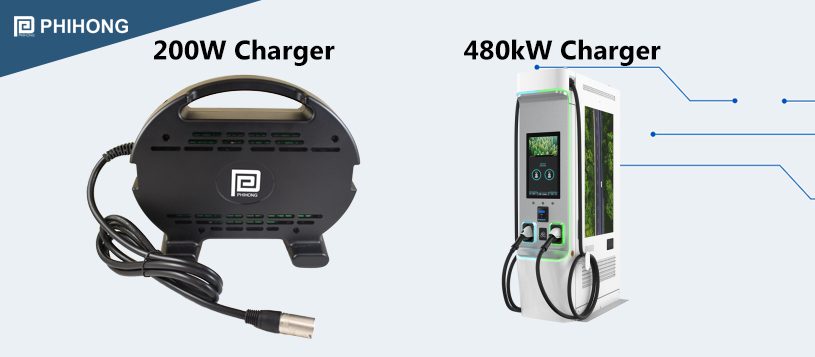
*Products Shown (Left to Right):
Phihong 200W 24V Lead Acid Battery Charger
Zerova 480kW Power Dispenser DC Charger – DA Series
Future Trends
As technology advances, the future of power adapters, chargers, and battery technology is set to be transformed by several key trends and innovations.
Universal Compatibility and Smart Charging: With the rise of USB-C and Power Delivery (PD) standards, adapters and chargers are becoming more versatile. PD 3.0 and 3.1, in particular, allow chargers to be flexible in what they can power, supporting a wide range of devices with optimized charging speeds through Programmable Power Supply (PPS) technology. This trend is making it possible for a single adapter to efficiently charge everything from smartphones to high-performance laptops.
GaN Technology: Gallium Nitride (GaN) technology is revolutionizing chargers by offering higher power density than traditional silicon-based chargers. This results in less energy loss and more compact, efficient chargers that can handle higher power outputs, making them ideal for the growing demand of power-hungry devices.
Wireless and Resonant Charging: Wireless charging, which has been around since the early 2010s, continues to evolve with resonant charging technology. Resonant charging allows for greater charging distances and increased spatial freedom, enabling devices to charge over longer distances without the need for direct contact with charging pads. This will lead to more flexible and convenient charging setups.
Integrated Charging: The concept of integrated charging mechanisms, such as those built into furniture or surfaces, is gaining traction. Although still in the early stages, this technology could one day eliminate the need for traditional chargers altogether, offering seamless and unobtrusive charging solutions embedded in our everyday environment.
These trends highlight a future where power adapters, chargers, and battery technology will be more efficient, versatile, and integrated into our daily lives, all while being kinder to the environment.
CLIENT'S QUOTE
Phihong's Power-Over-Ethernet solutions have transformed our network, boosting efficiency and reducing costs. Their seamless integration has simplified both installation and maintenance.
Explore More with Phihong USA
As we conclude our exploration of PoE technology, it’s evident how these innovations are streamlining power and data integration across various industries. Phihong USA stands at the forefront of this technological advancement, offering a diverse range of power solutions designed to meet the evolving needs of modern industries.
Phihong USA’s extensive product lineup includes:
- Power over Ethernet (PoE) Solutions: Delivering reliable power and data transmission over a single cable, ideal for simplifying network installations and reducing costs.
- AC/DC Adapters and Power Supplies: From compact adapters to industrial-grade power supplies, Phihong provides solutions that ensure efficiency and reliability in various applications.
- Battery Chargers: Customizable chargers for lithium-ion and lead-acid batteries, supporting a wide range of power requirements for mobility and industrial applications.
- Medical Power Supplies: Specialized power solutions designed to meet the stringent requirements of the healthcare industry, ensuring safety and reliability.
Phihong USA is committed to innovation and excellence, continually developing products that meet the highest standards of performance and reliability. Their global reach and dedication to customer support make them a trusted partner in powering the future.
Here are some useful links to explore Phihong USA’s offerings further and bring in new potential clients:
Visit Phihong USA to discover how their advanced power solutions can support your business needs. Whether you’re looking to upgrade your network, or find reliable power supplies, Phihong USA has you covered.
By choosing Phihong USA, you’re partnering with a leader in power technology, ensuring your operations run smoothly and efficiently with top-tier power solutions.

Contact Our Team Today!
Our dedicated sales team and international partners are prepared to support you with your latest projects and initiatives globally.
FAQs
Are all power adapters and chargers compatible with every device?
Not all power adapters and chargers are compatible with every device due to differences in power requirements, connector types, and charging protocols. Devices often have specific voltage and current needs, which can vary significantly between different models and manufacturers. Additionally, charging standards such as USB Power Delivery (USB-PD), Qualcomm Quick Charge, or proprietary technologies can affect compatibility. For instance, a charger designed for a smartphone might not work optimally with a laptop or a tablet because of differing power needs and connector types. It’s crucial to check the specifications of both the device and the charger to ensure compatibility, as using an incompatible charger could lead to inefficient charging or even damage to the device.
What are some advantages of using GaN technology in chargers?
GaN (Gallium Nitride) technology in chargers offers several notable advantages over traditional silicon-based chargers. GaN chargers are typically more efficient, allowing for higher power densities and smaller, lighter designs. This efficiency translates to reduced heat generation, which enhances the longevity and reliability of the charger. Additionally, GaN technology supports faster charging speeds due to its ability to handle higher currents without overheating. The compact size of GaN chargers also makes them more portable and convenient for travel. Overall, GaN technology represents a significant advancement in charging efficiency and design, benefiting users with more powerful and compact charging solutions.
How does wireless and resonant charging work?
Wireless and resonant charging work on the principle of electromagnetic induction. In wireless charging, a charging pad contains a coil that generates an electromagnetic field when an electric current passes through it. This field induces a current in a coil within the device being charged, which is then converted into electrical energy to recharge the device’s battery. Resonant charging, an advanced form of wireless charging, uses resonant inductive coupling, where both the transmitter and receiver coils are tuned to the same frequency. This tuning allows for more efficient power transfer over greater distances compared to standard wireless charging, enabling more flexibility in positioning and improved efficiency in energy transfer.
How does the safety of internal battery charging circuitry compare to external battery chargers?
The safety of internal battery charging circuitry generally benefits from being integrated directly into the device, providing more precise control over charging parameters and better protection against overcharging or overheating. Internal chargers are specifically designed to match the device’s power requirements and include safety features such as thermal management, voltage regulation, and current limiting. External battery chargers, while often versatile and capable of charging multiple devices, might not always offer the same level of tailored safety features for each device. Consequently, using high-quality external chargers that comply with safety standards is crucial to ensure they do not compromise the safety of the internal battery. Properly designed internal circuitry often provides a more reliable and secure charging experience tailored to the specific needs of the device.

